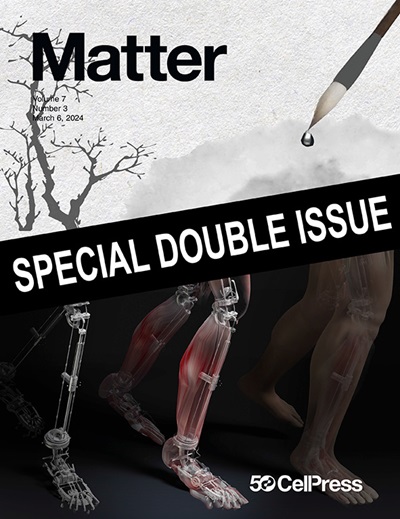调节可充电锌电池共晶电解质中Zn2+的溶剂化结构
IF 17.5
1区 材料科学
Q1 MATERIALS SCIENCE, MULTIDISCIPLINARY
引用次数: 0
摘要
可充电锌电池(rzb)由于其固有的可负担性、安全性和环保性等优点,是大规模储能的有希望的候选者。尽管有大量的工作集中在电极材料上,但非电极成分,特别是电解质,对于在rzb中获得高能量和功率密度至关重要。最佳电解质应具有与电极材料良好的相容性、高安全性和长期耐用性。共晶电解质是一类新型的电解质,由于其不可燃性、结构柔韧性、热稳定性和化学稳定性、易于制造和高度可调性而受到广泛的研究。虽然一些综述总结了它们在电化学储能中的应用,但进一步的发展需要深入分析。本文综述了共晶电解质的机理及其在RZBs中的最新进展。根据共晶电解质的形成机理,将共晶电解质分为四类,并描述了共晶电解质的结构与热力学-输运-电化学性能之间的关系。此外,我们总结了四种典型共晶电解质在RZBs中的最新进展和应用,特别关注了不同成分对溶剂化结构的影响。我们还讨论了共晶电解质的剩余挑战和潜在的未来前景,这为实际的RZB系统提供了诱人的机会和前景。本文章由计算机程序翻译,如有差异,请以英文原文为准。
Regulating Zn2+ solvation structure in eutectic electrolytes for rechargeable zinc batteries
Rechargeable zinc batteries (RZBs) are promising candidates for large-scale energy storage due to their intrinsic advantages of affordability, inherent safety, and environmentally friendly properties. Despite numerous works focused on electrode materials, non-electrode components, particularly electrolytes, are crucial in attaining high energy and power density in RZBs. Optimal electrolytes should be equipped with excellent compatibility with electrode materials, high safety, and long-term durability. Eutectic electrolytes, a novel class of electrolytes, are widely studied because of their non-flammability, structural flexibility, thermal and chemical stability, ease of fabrication, and high tunability. Although some reviews have summarized their application in electrochemical energy storage, further development requires in-depth analysis. This review aims to provide a mechanistic understanding of eutectic electrolytes and an overview of their recent advancements in RZBs. We classify eutectic electrolytes into four categories according to the formation mechanisms and depict the relations between the structure and thermodynamic-transport-electrochemical properties of eutectic electrolytes. Additionally, we summarize recent progress and applications of the four typical eutectic electrolytes in RZBs, specifically focusing on how various compositions affect the solvation structure. We also discuss the remaining challenges and potential future perspectives of eutectic electrolytes, which deliver appealing opportunities and prospects for practical RZB systems.
求助全文
通过发布文献求助,成功后即可免费获取论文全文。
去求助
来源期刊

Matter
MATERIALS SCIENCE, MULTIDISCIPLINARY-
CiteScore
26.30
自引率
2.60%
发文量
367
期刊介绍:
Matter, a monthly journal affiliated with Cell, spans the broad field of materials science from nano to macro levels,covering fundamentals to applications. Embracing groundbreaking technologies,it includes full-length research articles,reviews, perspectives,previews, opinions, personnel stories, and general editorial content.
Matter aims to be the primary resource for researchers in academia and industry, inspiring the next generation of materials scientists.
 求助内容:
求助内容: 应助结果提醒方式:
应助结果提醒方式:


